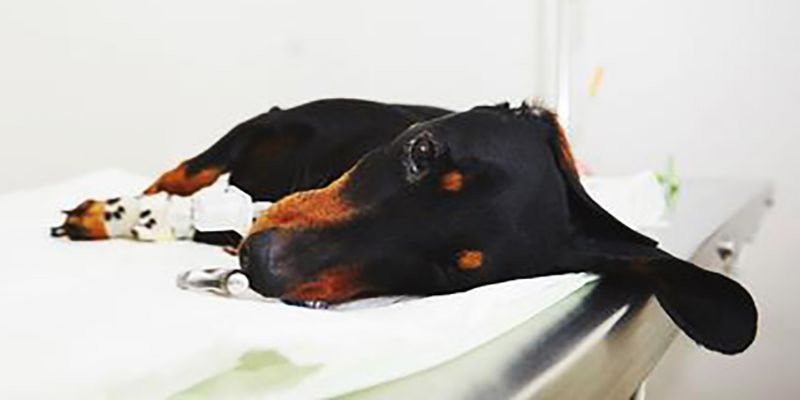- Home
- News, Articles & Reviews
We are hiring! Please click here to join our growing magazine delivery team in Gloucestershire!
Areas
Pets & Wildlife
Archive

Spinal cord compression in dogs and cats
All Areas > Pets & Wildlife > Pet Care
Author: Oliver Wilkinson, Posted: Monday, 24th April 2017, 08:00
The average dog and cat has seven bones in their neck, 20 in their back and three in the sacrum (bones that pass through and connect to the pelvis). They also have anywhere from 5 to 23 bones in their tails. That’s a total of somewhere between 35 and 58 spinal vertebrae/bones. The most important are the first 30 from the back of the skull to the top of the tail.
These bones provide a bony cage through which the delicate nervous tissue of the spinal cord travels. With the exception of the three sacral bones, which are fused, the rest of these vertebral bones articulate, moving against each other to allow curvature and movement of the spine. They are cushioned between each other by shock-absorbing, intervertebral discs that absorb compression and stress to the spine.
Compression on the spinal cord can cause intense pain or permanent paralysis
One of the more common problems is when a disc ‘prolapses’. This is usually when the outer fibrous part of a disc tears or fissures and the soft gel-like interior is propelled into the space where the nerves travel. This is known as Hansen type-I disc disease. Alternatively, the outer part of the disc (the annulus) itself can bulge into the spinal cord and impinge on the nerves. This is known as Hansen type-II disc disease.
Compression on the spinal cord can cause intense pain, temporary nerve damage or, in extreme cases, permanent paralysis. Treatment might be conservative with powerful anti-inflammatories and pain relief to treat the symptoms. This is more likely when there isn’t significant nerve function impairment. If spinal cord damage is significant then surgery to relieve pressure from a ruptured or bulging disc may be required. Diagnosis is usually achieved with radiography, or more accurately with MRI or CT imaging of the individual discs.
Back disease can be as problematic in pets as it is in humans
Whether surgery is indicated or conservative treatment is chosen, back disease can be recurrent and as problematic in pets as it is in humans. Weight management, physiotherapy and rehabilitation are key to long term success.Copyright © 2024 The Local Answer Limited.
Unauthorized use and/or duplication of this material without express and written permission from this site's author and/or owner is strictly prohibited. Excerpts and links may be used, provided that full and clear credit is given to The Local Answer Limited and thelocalanswer.co.uk with appropriate and specific direction to the original content.More articles you may be interested in...


© 2024 The Local Answer Limited - Registered in England and Wales - Company No. 06929408
Unit H, Churchill Industrial Estate, Churchill Road, Leckhampton, Cheltenham, GL53 7EG - VAT Registration No. 975613000You are leaving the TLA website...
You are now leaving the TLA website and are going to a website that is not operated by us. The Local Answer are not responsible for the content or availability of linked sites, and cannot accept liability if the linked site has been compromised and contains unsuitable images or other content. If you wish to proceed, please click the "Continue" button below:




